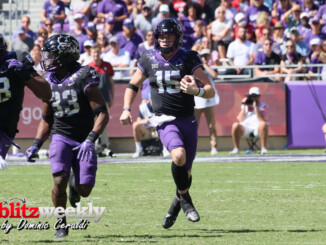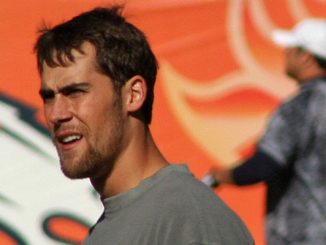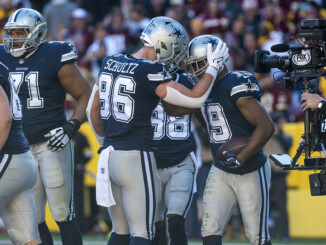
By Mark Miller
Listening to and looking at Lee Trevino is like being transformed back in time.
It’s as if it were the 1970s again with the Dallas native holding court after winning another major golf tournament. Though the Hilton Anatole conference room wasn’t filled with media people, the man affectionately known at Merry Mex was as animated as ever.
Yes, his 75-year-old hair is grayer but time has been good to him. He still plays golf daily though not in professional tournaments since 2000 and with a cart. He continues to live in his Preston Hollow home with second wife Claudia, with whom he’s been married since 1983.
Trevino stays in good health by running on a treadmill, lifting weights and doing plenty of upper body stretches. That’s what someone does after four back operations including one to implant steel rollers, plus screws placed in his throat and thumb after being struck by lightning in 1975.
He also remains spry thanks to a couple of young adult children and a schedule that still has him speaking at corporate events like the March 31 AT&T Luncheon that was part of Southern Methodist University’s Athletic Forum.
What has changed is the downward trend in participation in his beloved game. Since peaking at just above 30 million players in 2003, it’s now at about 27 million. Trevino cites three reasons why.
“The golf courses have become too hard for people to play,” he said. “It takes time. If you’re going to play golf now it’s going to take at least six-and-a-half hours for you to leave the office, play, take a shower, and go back. And it’s become really expensive not only equipment-wise but extremely expensive to belong to the clubs.”
How does he think the trend can be reversed? First, by having groups like United States Golf Association, Professional Golfers Association of America and The First Tee Foundation obtain distressed golf courses and allow youth to play for free aided by donations.
“We have to find a way to bring up the kids who don’t have the means to play this game,” he said. “We’ve got to find a way to get the caddie back into the clubs. Let these kids caddie in the summer time and on the weekend where they can make a few bucks and you never know, they might fall in love with it and have a passion for it.”
While Trevino didn’t have the means growing up, he did have the love developed after sneaking into area clubs to play. He later became a caddie at the old Dallas Country Club where he honed his unorthodox flat-swing style for which he became famous.
He worked on his game during a four-year stint in the U.S. Marine Corps and again while doing construction at a golf course before eventually becoming a club pro in El Paso. His game improved enough to where he qualified for the U.S. Open in 1966 and 1967 with his fifth-place finish in the latter attempt earning him Rookie of the Year honors and enough money to make golf his full-time job.
Over the next 30+ years, Trevino won 29 times on the regular PGA Tour and another 29 on the Champions circuit. That included six major championships and 1971 PGA Player of the Year. He also played in six Ryder Cups.
Now the man who has traveled the world and golfed with U.S. presidents and other dignitaries would just like those coming up behind him to develop a love for the game like he had.
“How you become good at this sport is you have to have a passion for it,” he said. “You go way beyond where you have no coach, you have nobody pushing you just on your own. Kids who have a passion for a sport, especially an individual sport, it’s pretty difficult. Golf, if you have a passion for it and want to pursue it, you do a tremendous amount of sacrificing. It’s there for the taking.”




